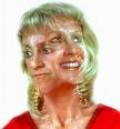
Bipolar Reviews
|
About Bipolar II Disorder
About Bipolar II Disorder
Bipolar disorder is also known as manic depressive disorder. It is a mental illness that presents itself as mood swings or mood cycling. Many people do not realize that there are actually two types of bipolar disorder. Bipolar I disorder is typically defined as raging mood cycling with episodes of extreme mania and depression, as well as the occasional mixed episode. Bipolar I patients may also experience psychotic or hallucinating symptoms.
Bipolar II disorder is typically defined as rapid mood cycling with episodes of hypomania and depression. Bipolar II disorder does not occur with psychotic or hallucinating symptoms. Additionally, hypomania is defined as a milder form of mania, in which the patient has a period of hightened happiness or elation. Depression with bipolar II patients is often increased severe than in patients with bipolar I disorder. Suicide, suicide threats, suicide attempts, and thoughts of suicide are much more common in bipolar II patients than bipolar I patients.
A diagnosis of bipolar II disorder is typically made when the patient has had one or more major depressive episodes, at least one hypomania episode, no manic episodes, and when no other reason for symptoms can be found.
Symptoms of depression with bipolar II disorder include decreased energy, unexplained weight changes, feelings of despair, increased resentment, and uncontrollable crying. Symptoms of hypomania include sleeplessness, racing thoughts, distractibility, excess energy, and impulsive judgements. These symptoms are similar to mania, but are less severe.
Treatment of bipolar II disorder typically involves a combination of medication and therapy or counseling. Medications typically prescribed for treatment of bipolar II disorder include anti - depressants such as Celexa, as well as mood stabilizers such as Topomax. Mood stabilizers are vitally important in treatment of bipolar disorders, considering antidepressants alone can cause the patient to enter into a manic or hypomania episode.
Bipolar II disorder is actually often misdiagnosed as clinical depression. This is due to the fact that dejection is most often present, and hypomania episodes rarely come to light in therapy sessions due to their upbeat nature. Intrinsic is typically through treatment by antidepressants that the pertinent diagnosis is made, because the patient will spin into a hypomania episode almost instantly if the diagnosis should show bipolar II disorder rather than clinical depression.
Counseling or therapy treatment options for bipolar II disorder may include mean counseling methods, tete-a-tete of triggers and life style changes that can lessen the severity of episodes, and cognitive behavioral therapy. Patients with a stout case of bipolar II disorder may benefit from counseling or therapy alone without medication. However, this is less common with bipolar II disorder than with bipolar I disorder, due to the nature of the turbulence of the depressive states.
It is vitally important for people with symptoms of bipolar II disorder to seek the help of mental health professionals as soon as symptoms be remodelled evident. Bipolar II disorder patients account for at least half of the suicides each year. To prohibit suicidal behavior, it is important for bipolar II patients to be properly diagnosed at an smallest stage, so that ongoing treatment of the illness can begin and be continued in disposition to avoid suicidal behavior.
 |
 |
 |
Latest Medication For Bipolar Affective Disorder
Prozac Bipolar Disorder Bulimia Anxiety
Bipolar Borderline Personality Disorder
More Bipolar Articles
... major side effects include a decrease in sexual desire or ability. Less common major side effects include agitation, illusion, blurred perception, fever, increase in urinal frequency, lack of emotion, decreased dead-eye, skin rashes, and trouble breathing. If you experience any of these item effects you ...
... Cognitive behavioral therapy is a fairly new method of therapy for bipolar patients in which the generous learns to recognize symptoms of their illness, triggers for mood swings and inappropriate behavior, and alternatives to inappropriate behavior. Cognitive behavioral therapy also allows the patient ...
Treatments For Bipolar Disorder
... can be learned to assist the patient in gaining some control over their bipolar disorder. Typically, bipolar disorder is treated with more than one medication. This is due to the dual nature of bipolar disorder. Most patients need at least two medications: one to control depression and one to supremacy ...
... regular behaviors. Depression episodes are typically accompanied by extreme sadness and feelings of hopelessness or worthlessness, decreased energy, and sleeping remarkably much. Manic episodes are typically accompanied by extreme happiness, inability to accommodate, in addition energy, racing thoughts, ...

|
| Copyright © 2006-2012 Internet Marketing Tools, All Rights Reserved |